Water line disinfection is essential for maintaining the safety and purity of drinking water systems throughout California. Effective disinfection helps eliminate harmful bacteria, viruses, and other pathogens, safeguarding public health and preserving the reliability of water systems. This guide provides a step-by-step breakdown of the disinfection process, ensuring that your water supply stays clean and safe.
STEP 1: Making Sure the Waterlines are Clean and Free of Debris
The single most important factor influencing the success of water line disinfection is to make sure the waterlines are free of dirt, debris and foreign organic material before starting the disinfection process. It is crucial to thoroughly inspect the water lines. This involves examining for leaks, corrosion, or any physical damage that could affect the effectiveness of disinfection. Identifying and addressing these issues early ensures that the process will be successful. Additionally, assessing the water line system helps determine the most suitable disinfection method based on the system’s size, condition, and complexity.
Step 2: Cleaning the Water Lines
The next step is to clean the water lines by removing any accumulated debris, sediment, or organic materials. These substances can harbor bacteria and biofilms, reducing the effectiveness of disinfection. Depending on the condition of the lines, this may involve flushing them with high-pressure water or using specialized tools to clear out the debris.
Step 3: Deciding the Method of Sanitization
The most widely used method for disinfection is Water line Chlorination. Chlorination has proven safe, effective and economical thus becoming the primary method of sanitization.
Alternative methods for sanitization include UV light Disinfection, Biocide disinfection and Ozone control. Each of these have unique applicability, but are not commonly used in pipeline disinfection for their own reasons.
Step4 : Executing the Disinfection
Now that the sanitization method has been chosen, you must determine the best route to inject the disinfection solution into the waterline. Most of the time the solution will be injected at the backflow preventer or source which feeds the system. Alternative methods are the isolate the waterlines that are getting sanitized and take an outside sanitary water source and inject chlorinated water into the system at a desirable concentration to kill any organic matter.
Step 5: Flushing of the Water Line
After the desired contact time has been reached the waterlines must be flushed with potable water such that the concentration of chlorine in the waterline matches the incoming water supply.
Step 6: Results
Following the flushing of the system, water samples are collected from various points throughout the waterline and brought to an independent state certified laboratory who will conduct testing on the samples to ensure the system is absent of any undesirable bacteria and viruses. If the results show the absence of the sampled bacteria, the system will be bacteriologically safe for normal use.
